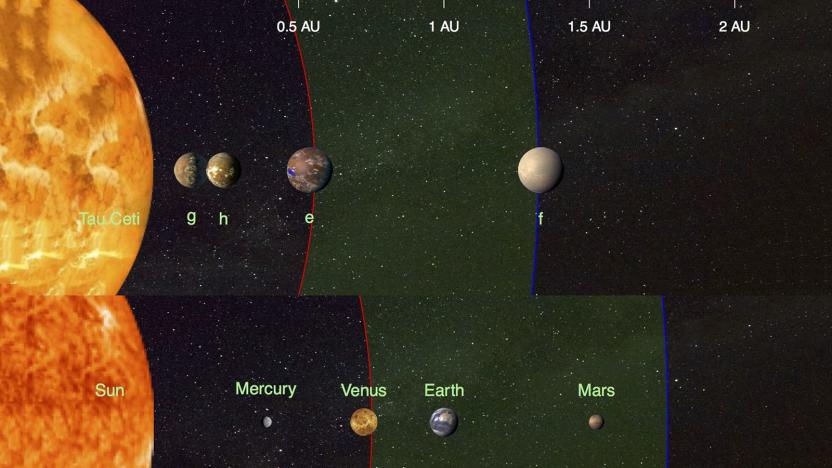habitablezone
Latest

Life may be easier to find on planets outside the ‘habitable zone’
When scientists are looking for worlds that might harbor life on other planets, they tend to look for worlds that have features similar to Earth's. It makes sense; after all, our dominant theories on how life evolved on the planet center on the presence of oxygen, organic molecules and liquid water. But now, two scientists are positing that we may be severely limiting ourselves by only looking for rocky planets with surface oceans. A study published last week at arXiv.org outlines the possibility that it's more likely that scientists will find life on icy worlds with subsurface oceans.

A nearby Sun-like star hosts four Earth-sized planets
Exoplanet discoveries are getting pretty common, so it takes something special to catch our attention. A star called Tau Ceti fits the bill, as it's just 12 light years away and unlike the Trappist-1 red dwarf, is very similar to our own yellow dwarf (G-type) sun. Researchers have determined that it probably hosts planets like Earth that sit in its habitable zone. The only hitch is that the star is known to have a massive debris disk that probably bombards its worlds with asteroids, so living there would be a pretty big challenge.

Astronomers find three planets in Gliese 667C's habitable zone
Astronomers have a good day when they detect one planet inside a star system's habitable zone. A mostly European team of researchers must be giddy, then, as it just found three of those ideally located planets around Gliese 667C. The group has combined existing observations from the ESO's Very Large Telescope with new HARPS telescope data to spot the trio of super-Earths, all of which could theoretically support liquid water. As long as the discovery holds up, it may have a big impact on exoplanetary research: it shows both that three super-Earths can exist in one system and that more than one survivable planet can orbit a low-mass star. We can only do so much with the findings when Gliese 667C is 22 light-years away, but it's good to learn that space could be more human-friendly than we once thought.


